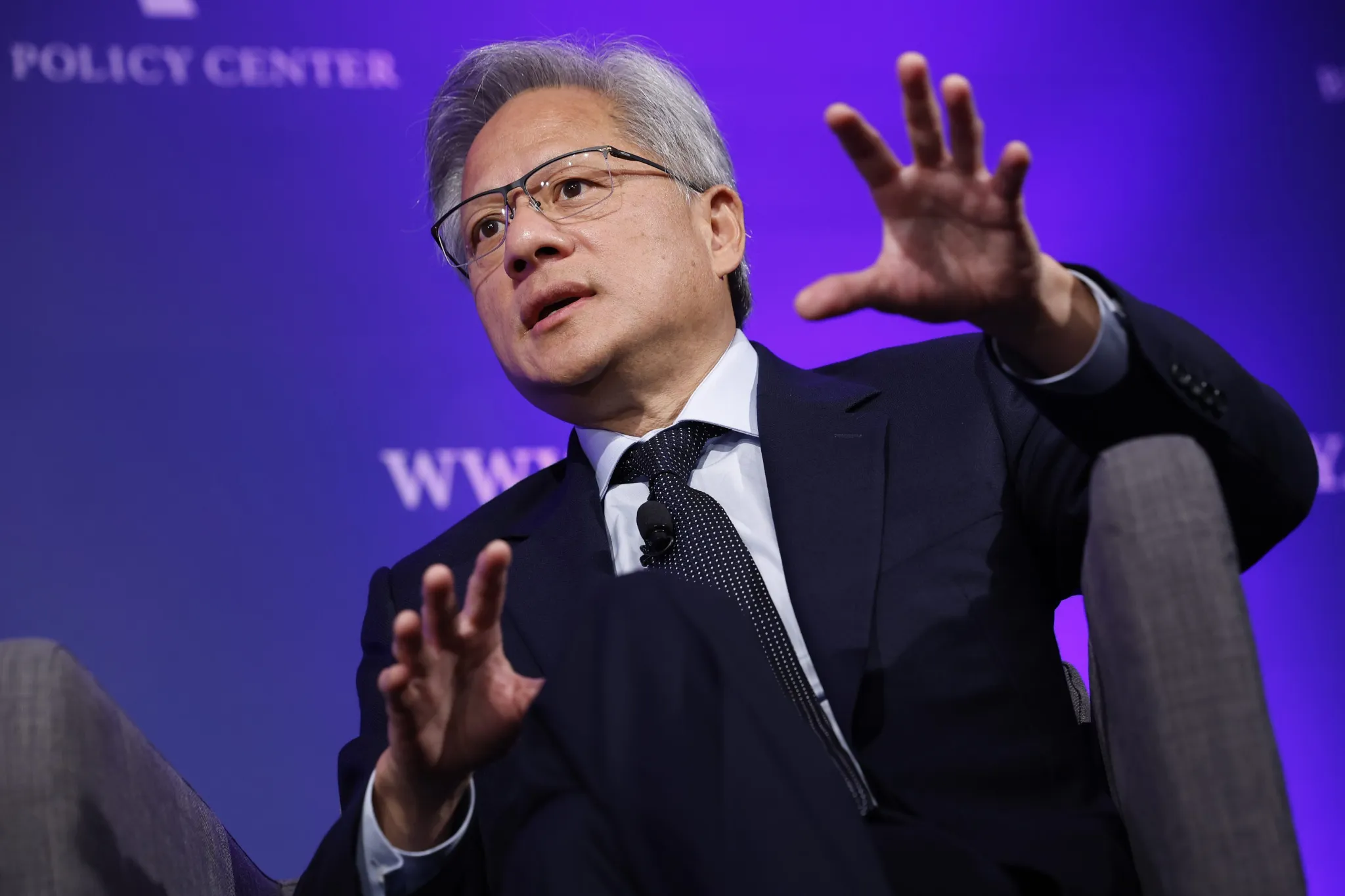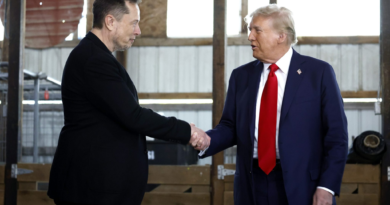In the Bitcoin ETF marketing wars, Grayscale has an unusual advantage—its ticker
The recently approved spot Bitcoin exchange-traded funds have been distinguishing themselves to investors in a fierce race towards near-zero on fees. But there’s another frontier of the battle: marketing. And in that race, one fund has a head start.
Grayscale’s GBTC, the trust that the asset manager successfully sued the Securities and Exchange Commission to convert into an ETF—is the only issuer, due to a technicality, that’s free to advertise its ticker symbol as it pleases.
“It gives them an unfair advantage,” Raji Srinivasan, a professor of marketing at the University of Texas at Austin who’s studied the impact of ticker symbols on retail investors, told Fortune.
GBTC ads on nearly every Jumbotron in Denver Airport
Spot ETF fomo is just starting @Grayscale pic.twitter.com/v1OFZe2oM3
— jk.sats🟧 (@jksats) January 3, 2024
Technically speaking
When Grayscale registered its ETF with the SEC, it filed something called an S-3, whereas its nine competitors were forced to file an S-1, a source close to the matter told Fortune. Simply put, thanks to Grayscale filing reports about GBTC in 2020, when it was a closed-end trust, the asset manager is considered a “well known, seasoned issuer,” or “WKSI,” in the eyes of the SEC, because its shares have been trading for at least 12 months. That’s why it could file an S-3 form instead of an S-1.
WKSI status is reserved for issuers the agency deems to be tried and tested—and therefore afforded greater access to public markets. A key benefit of WKSI status is permission to advertise a ticker, whereas issuers filed under S-1 must include a link to a prospectus, often a lengthy financial document.
This complicates the marketing of their trading symbol via, say, TV commercials or billboards, and it remains in place until WKSI status is granted. In other words, Grayscale’s competitors will need to wait until at least January of next year to add their trading emblem to all marketing materials in lieu of a direct prospectus link.
Ticker power
Ads for GBTC’s former trust have been in airport terminals and subway cars for years, so it’s a symbol known to financially savvy passersby—a familiarity Grayscale is seeking to leverage to maintain its dominance among Bitcoin ETF issuers.
A previous study by Srinivasan discovered that congruent ticker symbols (an acronym different from a firm’s name but still recognizable) increase investors’ processing fluency with its stock. In other words, when people can more easily process information about an object, they’re more inclined to assign it positive attributes. This is where Grayscale’s GBTC may shine when touted to potential clients.
“If you already have a name that’s been in existence, it really gives you a leg up,” said Srinivasan.
Seres Lu, Grayscale’s VP of marketing, said in a statement to Fortune that although the firm’s marketing strategy “really hasn’t changed” since the SEC issued its approvals, “The investment community has come to know GBTC as ‘the original’ investment product that made Bitcoin investing accessible in brokerage and retirement accounts—through the simplicity of a ticker symbol.”
‘It’s not about product marketing’
However, some argue it’s precisely this recognition that could give some investors pause, as it resonates too much with Grayscale’s former closed-end trust.
“It’s not new…they’re advertising something else,” Matthew Sigel, head of digital assets research at VanEck, told Fortune. While the ads have pivoted to ETFs, he says it fails to convey the firm’s departure into a new product—and the details of said product.
“Customers both new and old pay a lot of attention to fees,” added Sigel, who isn’t convinced the ticker will do much to maintain Grayscale’s dominance, citing the ETF’s outflows of over $6 billion since approval, according to Bloomberg data.
Matt Hougan, CIO at Bitwise, similarly told Fortune that he believes investors eventually will gravitate to firms with the lowest fees. As for Grayscale’s ostensible head start with its ticker, “restrictions on new tickers are just something you have to work with.”
For Hashdex, another competitor, its marketing strategy is “rarely going to be product heavy,” Chris Glendening, head of marketing, told Fortune. Instead, the issuer wants to engage new investors in dialogue about what Bitcoin is to build long-term trust, such as by partnering with the NASDAQ to launch a digital assets academy for advisors.
“It’s not about product marketing,” he added, “it’s about asset class marketing and education.”
Bitcoin for boomers
The marketing of the ETFs has been a noticeable departure from the days of Tom Brady in FTX commercials, the Miami Heat’s FTX Arena, Inter Miami’s XBTO uniforms, and Kim Kardashian gushing over EMAX tokens on Instagram.
Instead, more issuers are trying to appeal to new clients—and their financial advisors—who may love ETFs but be skeptical of digital assets.
“They’re going to be less tech savvy, of a different age demographic, and they’re less likely to be risk takers,” Bitstamp CEO Bobby Zagotta told Fortune. He thinks the emphasis should be on building trust with new investors, over mass ads for novel “shiny objects.”
VanEck’s Sigel says his firm’s audience falls into two categories: institutional investors and financial advisors, and retail investors. The latter tend to be younger, active on social media, and already investing in crypto via exchanges like Coinbase, and they can be sold on switching to an investment with lower fees. This group has dominated the early flows so far, Sigel added.
The first demographic can be tougher to reach, he says, but the argument that ETFs offer increased security and regulation resonates with “boomers who are less likely to buy Bitcoin, and be more likely to have a financial advisor.”
Firms including VanEck, Bitwise, Wisdom Tree, and Grayscale all have secured spots to run TV commercials on financial news shows including Squawk Box on CNBC and Cavuto: Coast to Coast on Fox Business, the Wall Street Journal reported.
Weeks before the SEC’s approval of Bitcoin ETFs, Bitwise released an ad featuring Jonathan Goldsmith—notable for starring in Dos Equis beer’s “The Most Interesting Man in the World” campaign—where he expresses interest in Bitcoin.
Bitwise hired Jonathan Goldsmith from the iconic “Most Interesting Man in the World” ad campaign to promote their #Bitcoin ETF.
Bullish. pic.twitter.com/idnp2Jb0No
— ZacG (@zacguignard) December 18, 2023
In Hashdex’s commercial, a vintage television plays a grainy interview from the 1970s, where the host tells his guest about the wonders of this burgeoning phenomenon called “the home computer.”
Meanwhile, in an promotional video by VanEck posted on X, a phone screen shows a text from “Mom” that says: “How can I buy Bitcoin???” Her child texts back: “It’s easy now…There are ETFs.”




